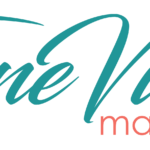Everyone Has an Online Reputation – How Do You Manage Yours? Part II
What are people saying about you? Good online reputation management is not only about being reactive. It’s also about being proactive. You should be monitoring your public reputation on a regular basis, not just when something negative is being said that affects your character. In Part I of Everyone has an Online Reputation, we give you some reactive strategies to use when online reputation has been maligned. Now, we’re going to give you an overview of what you can do to monitor your online presence proactively.
In our last blog, we discussed the PESO model. Paid Media, Earned Media, Social Media, and Owned Properties are the four digital marketing channels that most impact your ORM.
These channels are the key to building and managing a positive, dynamic online reputation for your business.
- How do you see your business?
Think about this carefully. It is the way you want your business to be perceived by potential customers. Do you want to be an industry authority, a market leader, or the guru of exceptional customer service and responsiveness?
- Can you evaluate your current online reputation with an open mind?
This may be tough because the truth doesn’t always match your self perception. What comes to mind when people hear your business name? Ask family, friends, clients, potential clients, business partners, and all stakeholders. And, then listen to what people really think about your business. Here are five tools that will help you to determine if your digital presence corresponds to your offline reputation.
The Brand Grader
The Brand Grader (from Mention) will identify the most influential blogs and news websites that have published content from your business in the previous 30 days. The Brand Grader is free and you’ll get a score that will help you to identify your company’s strengths and weaknesses.
Mention
Mention can be used to track your brand, competitors, and customers in real time and in 42 languages. Mention’s $25 per month cost is well worth it because their platform scans millions of sources from social media networks, blogs, and other web properties.
Talkwater Alerts
Talkwater Alerts is also free and allows you to monitor everything online regarding your brand. You can also track your competitors activities. To set up an alert you’ll need to enter a minimal amount of information, and you can choose whether you want to receive notifications daily or weekly.
Google Alerts
Google Alerts is free and includes all content currently indexed on Google. You will be able to keep track of new content published about your business. You can also monitor industry news and follow your competitors. It’s simple to set up an alert. You search for a certain keyword and decide how frequently you want to receive notifications. If you choose to, you can define content sources such as news websites, blogs, and videos.
- How do you design a social media strategy to promote your desired reputation?
Develop a framework for the topics on which your brand wants to focus. Think about the use of keywords and media types (articles, videos, podcasts) and the people responsible for the creation and implementation of content. The following points will help you to design a dynamic social media strategy.
Identify Your Social Media Goals.
“A goal without a plan is just a wish” – Antoine de Saint-Exupéry. Before you can move forward with your plan, you need to define your goals. Do you want to increase sales? Do you want more followers? Do you want to raise awareness of your brand?
Determine which social media platforms will reach your ideal customer.
Building your online reputation is based on finding the platforms that are relevant to your current and future customers. For example, if you are trying to attract C-suite executives your focus should be on LinkedIn. If your concentration is on lifestyle and design, your should be posting on Pinterest and Facebook.
Consider you competitors’ social media presence.
If a direct competitor has a solid, engaging presence on a specific social media platform, that platform is probably a good fit for your business as well. You can research your own and your competitors’ social media presence with the free version of Talkwater or Fanpage Karma ($14.90 per month).
Gain demographic insights about your audience and competitors.
Understanding your demographics will go a long way in helping you to further strengthen your online presence. There are numerous platform-specific tools that can help.
Identify what content will resonate with your audience.
You need to do some research and look at what your competitors are doing. Don’t copy your competitors; use them for inspiration. Set up a social media content calendar to help you stay consistent and keep track of posts. Encourage your fans to engage and be responsive to questions and comments.
Track your social media metrics.
Set up a social media dashboard with Cyfe to track the metrics that are most vital to your business.
- Do your blog posts enhance your reputation?
Good content should inspire specific business outcomes. This means understanding what your customers care about along with strong creative, social and SEO execution. Your content should be unique, solicit sharing, and provide substantial value.
- Use Relevant Keywords: If you want your target audience to keep you top of mind, include the right keywords in your content. Google holds the biggest market share, so you can ignore the other search engines. Use the free Google Adwords Keyword Planner to get information on the monthly search volume of keywords, a list of suggested keywords, and historical data.
- Strengthen Your Headlines: The CoSchedule Headline Analyzer is free and easy to use. As the name suggests, it will analyze your headlines and offer recommendations for improvement.
- Focus on Readability, not Search Engines: You want the average reader to be able to make meaning of what they’re reading. For example, it’s often less confusing to use three short sentences instead of one long complex sentence. It’s understood that you will be using industry jargon, but be careful to use easily understood vocabulary. Don’t try to impress your audience with your stellar vocabulary. Use the free Hemingway App to help you write clear sentences, change poor word choices, and give your text a readability score. Grammarly is another useful tool to help you detect grammatical errors, plagiarism, and poor word choices.
- Include Images: Using images, tables, and lists to format your posts into smaller paragraphs is another way to make your content reader-friendly. Pixabay and Pexels are two free sources for stock photos, illustrations, and vectors.
- Analyze User Metrics: Google Analytics is a free tool that will help you to determine what type of content works best for your blog. It will identify the origin of users, length of session, type of device used, and more.
Building a strong, positive online reputation is about taking control. It’s about being reactive by understanding when and how to react to what people are saying about your brand. And, it’s about being proactive by identifying your goals, honestly evaluating your online reputation, and intentionally using the many tools and strategies available to help you effectively manage and strengthen your online reputation.


